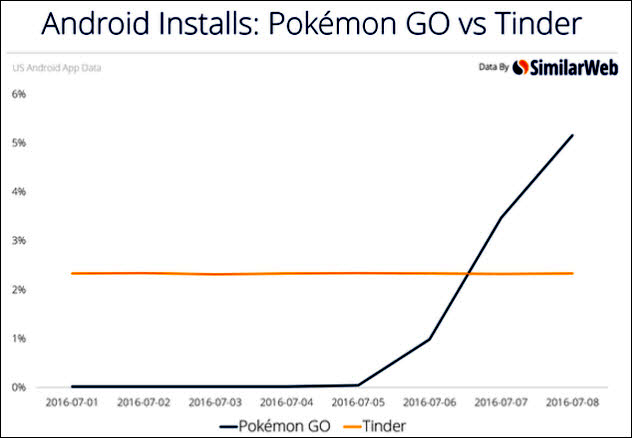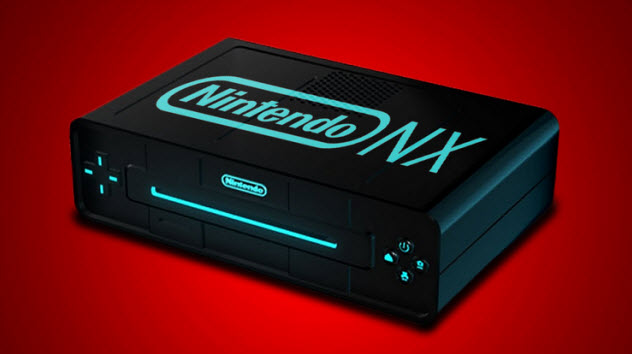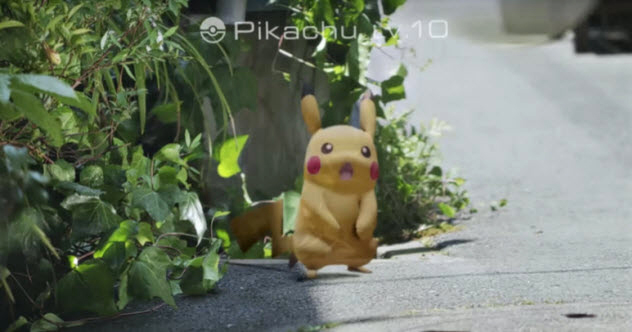In it, players traverse a mythical land, trying to catch “pocket monsters” of widely varied appearance and ability, then “train” them to defeat other monsters in battle. It’s since spawned a legion of video games, animated television series, trading cards, and other media, becoming the second most successful video game–based franchise in the world. It’s second only to Nintendo’s Mario series. And this was before July 6, 2016, when the Pokemon Go mobile app was released to the world and quickly rose to dominate, well, seemingly everything. It took five hours to climb to number one on the download charts after its release, over twice as fast as the previous champion. Here are some things you may find interesting about this instant phenomenon.
10 It May Overtake All Social Networks
Pokemon Go uses GPS to situate its players on a real-world map, which looks a lot like a rough version of Google Maps. It displays on their mobile device as they traverse the real world, looking for Pokemon to catch. As one might imagine, this requires a good deal of data, and gamers are not simply downloading this game, playing a couple times, and forgetting it. They are using it. Boy, are they ever. The sheer volume of users has placed a heavy burden on the game’s servers, and the ability to connect to them is rather critical to gameplay. Throughout the first week, connections were spotty for many users. Amazingly, the game has pretty much instantly eclipsed every social network in popularity, which was likely not foreseen by even the most optimistic Nintendo executive. Pokemon Go was installed on more than twice the number of Android phones in that first week—over 5 percent—than the insanely popular dating app Tinder, with a little more than 2 percent. Also in the first week, the game got within shouting distance of social giant Twitter in terms of daily users. As it continues to roll out new features (like the ability to trade Pokemon with other users, a feature coveted by fans), its popularity is likely to keep exploding for some time.
9 Its Players Are Getting A Ton Of Exercise
Even though Pokemon will appear randomly around your house, players know that the way to get the best use of the game is to venture into the outside world. As they wander around, Pokemon appear on their GPS map. Then the game switches to a real-world view—provided by the phone’s front camera—with your target animated onto the real terrain. Players then throw balls at their targets—“Pokeballs,” of course—which capture and contain them. If all of this sounds like a lot of exercise, it is. And even though gamers are a stereotypically lazy bunch, it’s not slowing them down one bit. During the game’s first weekend of release, social media was swamped with users complaining (mostly jokingly) about their sore legs and proclaiming the obsolescence of their gym memberships. While this is not without precedent, Pokemon Go is notably not a physical fitness or sports-themed game. It seems that the key to the oft-repeated parental refrain of “Get off that couch and go outside!” was to create a must-have game that actually requires players to do so.
8 It’s Making Americans Learn The Metric System
Most Americans would frankly rather eat their hats than use an app, let alone play a game, where important components are based on the metric system. Sure, the US system makes no damn sense. Even its formal name, the “United States Customary System,” implies that we only use it because we have been for a long time and we have no interest in changing that. Most of us rarely need to convert miles to kilometers, for instance—except Pokemon Go players, who now have to do it every day. And indeed, Google Trends results showed that in the first couple days of usage, searches for kilometer-to-mile conversions in particular distances spiked considerably. It’s often because of eggs, a main feature of the game. Eggs, of course, are for hatching more Pokemon (among other things, like experience and stardust, which can be used for upgrades). But you have to hatch them by walking. The longer you walk, the better the prize that is eventually hatched. Eggs come in 2-kilometer, 5-kilometer, and 10-kilometer denominations, so you can probably guess what distances were Googled the most often. It’ll be interesting to see if this has any lasting effect at all in raising our awareness of the metric system—as literally not one single other thing ever has.
7 It’s Created A Profitable Side Business
Of course, since this is a game that basically forces one to exercise and learn, some Americans are always going to find a way to avoid those things—and others will immediately learn to profit by helping them. In several large cities, it only took a matter of days before craigslist ads started to pop up advertising a service which is begging for a proper name: chauffeuring around Pokemon Go players who want to catch ’em all without doing all that walking. This is particularly helpful (or underhanded, depending on how you look at it) because of two of the game’s features. “Pokestops” are physical places (usually public) where players can collect virtual items, and “Gym Trainers” are physical locations where collected Pokemon can be powered up. Getting to these spots quickly can give players an obvious advantage, and some are paying up to $30 per hour to enterprising drivers. Ads are boasting all types of amenities, from snacks and drinks to Wi-Fi to advance knowledge on the driver’s part of all Pokestops and Gym Trainers in the area. While a dedicated app for this purpose has not yet arrived, it’s only a matter of time. And while this is merely the first and most obvious Pokemon-related service to spring up after the game’s release, it seems safe to say it will be far from the last.
6 It Might Help Some Criminals Commit Crimes
Since discussion of the game’s explosive popularity has largely taken place on the Internet, it stands to reason that there would be a fair number of unsubstantiated stories about terrible things happening to players right off the bat. While nobody did actually kill a child over a Pokemon or cause a traffic pileup by trying to catch one on the highway, there have actually been a number of instances where the game was tied, directly or indirectly, to criminal activity. In perhaps the most widely reported incident, a Wyoming teenager found a man’s dead body while looking for a Pokestop. However, the man’s death appears to have been accidental, an underreported detail. In a far more disturbing case, police in St. Louis County, Missouri, arrested four men on July 10, 2016—a mere four days after the game’s release—for essentially using it to locate people to rob. Players are able to place beacons to alert other players to landmarks, and these thieves were placing them near Pokestops to attract their victims. The Pokemon Company addressed this quickly, issuing a statement urging players to play in groups when in unfamiliar places and to be alert to their surroundings. Police stations nationwide have taken note of this incident, which hopefully does not become a trend.
5 It Could Completely Transform Nintendo
Beloved gaming giant Nintendo has taken a bit of a hit in recent years. The Wii U, their follow-up to the massively popular Wii console, was an attempt to combine the Wii’s interactive gameplay with high-definition graphics and an innovative touchscreen controller. While not a bad console, it was a tremendous flop and left many fans wondering whether Nintendo could possibly produce a next-generation console to compete with Microsoft’s formidable Xbox and Sony’s PlayStation juggernaut. The short answer: Nintendo owns a 32 percent stake in the Pokemon Company and in Niantic Labs, and it is now going to have a great deal more cash to innovate with. Within six days of Pokemon Go’s release, Nintendo’s market value increased by fully 60 percent—to the tune of $12 billion. The financial impact on the company in the long run will be nothing short of staggering. Pokemon Go is one of Nintendo’s first forays into the mobile market, and they recently announced the development of a new console—code-named NX—that is due to be released in 2017. One might shortly expect to see a revised plan of action from the company as they are currently receiving a sustained, massive influx of cash that has the potential to completely reshape the future of any company.
4 There Are Dangerous Counterfeit Versions
Even though the game is free, some users have had trouble getting it downloaded due to the heavy demand. Looking to jump the gun, others wanted to find ways to get the game before it was available in their area. As a result, many copies of the game have been downloaded from third-party servers, and most of these come with a little extra baggage attached. Of course, we’re talking about malware—specifically, a malicious remote access tool called DroidJack, which is pretty much exactly what it sounds like. The tool installs a backdoor that grants the installer full access to and control of the infected Android phone. The first installations showed up within 72 hours of the game’s release. Fortunately, the counterfeit version is not easy to install. Android’s security must be disabled for any unknown, third-party apps to be installed, and all downloads from a legitimate app store are verified. As the game’s rollout is complete, hackers should have a more difficult time getting their version onto players’ phones. But the game’s popularity means they certainly will not stop trying.
3 It’s Collecting A Huge Amount Of Data
Pokemon Go uses and stores GPS location data, and users must agree that the Pokemon Company reserves the right to share this information with third parties. But that’s not all. Not only can the user’s device be located generally or precisely, but the app obviously accesses the camera and not so obviously accesses the user’s storage, contacts, and network connections, among other things. Users logging in through Google also automatically grant access to their Gmail, Google Docs, and other Google applications. Niantic can basically use this outrageous amount of data in any way they see fit, and if they have specific plans for it, they’re not saying. Of course, the information collected and Niantic’s free use of it is all spelled out in the License Agreement, which explicitly states that location data may be provided to law enforcement if the need arises. But it gives few other specifics. Speculatively, it seems obvious that the marketing opportunities which could arise from legally tracking the precise movements of millions of people at all times are potentially tremendous, to say the least.
2 Letting Real-World Businesses In On The Action
Pokemon Go was developed from Ingress, a similar Niantic effort that also used GPS tracking and a real-world display. In place of Pokestops and Gym Trainers, Ingress featured “Portals” that were mapped out to real-world landmarks, including random businesses. This Portal map was largely transposed over Pokemon Go’s landmark system, which has predictably resulted in these random businesses wondering why their traffic seems to have exploded overnight. Even businesses which haven’t been automatically powered up by Niantic can easily get in on the act by using Lures. These are in-app purchases that attract Pokemon for a specified length of time and can be set down in any actual geographic location. Some savvy business owners have reported activating games of their own and then setting lures inside the business and watching Pokemon-hunting customers come rolling in. Using lures has also proven to be an effective double whammy for businesses fortunate enough to already be designated a Pokestop or Gym Trainer or even be near one. Of course, not everyone is delighted. One National Weather Service building, featured as a Portal in Ingress, has likewise been made a Gym in Pokemon Go, leading meteorologists to post signs asking that players power up their little monsters elsewhere.
1 It’s Bringing Augmented Reality To The Mainstream
Augmented Reality (AR), the blending of virtual elements with the physical world, is not new technology. It’s been employed in poorly received heads-up displays for passenger vehicles and the helmets of F-35 fighter pilots. It has even made a small segue into the consumer world in the form of Snapchat filters, which allow users to take video of themselves overlaid with digital animations. While Pokemon Go’s AR engine is certainly not fantastic—its digital elements often seem sloppily superimposed over the real world, and they do not interact with physical objects—the game has undeniably vaulted the entire concept into the public consciousness in a big way and in a very short amount of time. There are probably many attempts to replicate this success already underway, although the sheer scale of the game’s success can likely be attributed more to the popularity of the Pokemon brand than anything else (as evidenced by the fact that nobody has ever heard of Ingress). Given the vast amount of money that we now know is in play, it can only be a matter of time before we see the advent of AR-specific gaming platforms which do not currently exist. Perhaps it’s time for Google Glass to make a comeback?







![]()
















